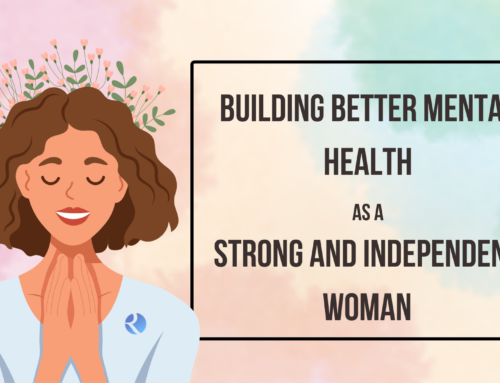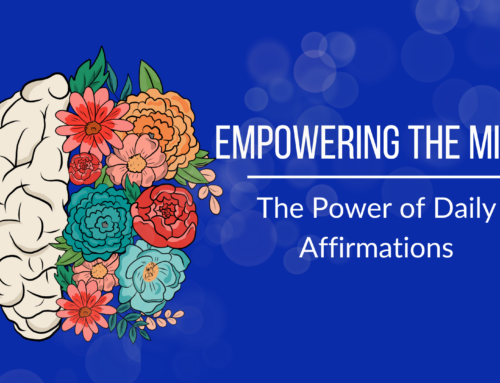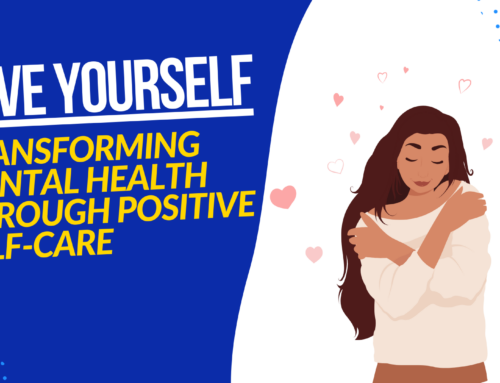
Hint: It takes more than not making excuses.
As the new year approaches, most of us are thinking about changes we’d like to see in ourselves. We want to start going to the gym, or eating better, or spending our money more responsibly. But as it turns out, less than 20% of people are able to stick to their New Year’s resolutions. So what can we do to change our approach?
Start Setting Yourself Up For Success Now…
“But there’s two weeks until the New Year and there’s so many holiday parties left and I don’t have time and…”
Listen, there is no good day to start making changes in your life, and it definitely doesn’t happen overnight. Our brains are energy-efficient machines, and the downside to this is that they hate change because it takes energy to grow new neural connections. The plus side is that we can grow new connections because of something called neuroplasticity.
Neuroplasticity simply refers to our ability to learn, and the cool thing is we can learn new things just by intentionally thinking about it regularly.
You don’t have to start doing your New Year’s resolution right now, but take 10 minutes twice a day and start visualizing yourself achieving your goals. It’s most effective if you do it first thing in the morning and right before you go to bed.
- Write down the outcome of your resolutions in detail. Engage all five senses in your description, and make sure you write in the first person present tense (Ex. It’s November, and I can feel my fingers on the keyboard as I log into my bank account and see that I have $10,000 in my savings account).
- Write down any and all positive emotions associated with the outcome (Ex. I feel excited and hopeful knowing I have the financial freedom to go on vacation this year).
- Set a timer and spend 10 minutes when you wake up and 10 minutes before you go to bed to visualize. Read your description in your head. Then close your eyes and imagine the outcome of your goal as if you’re already there. Engage all your senses based on your description and summon the emotions you’ve associated with the accomplishment.
This will feel weird at first, but you’ve got to fake it til you make it. It’s usually right when you’re about to give up that things are about to shift in your brain because you’re forcing it to focus on new things. Your brain is growing connections that will prepare you to take action towards your goals, but being the energy-efficient machine that it is, it’s going to take some convincing.
If you can spend hours on TikTok or binge watching your favorite TV show, you can take 20 minutes to yourself to start and end your day from a place of power.
Pay Attention To What You Care About.
Creating new habits is all about changing your point of focus.
In our brains, we have something called the salience network. It’s a network of communication pathways between different parts of the brain, and its job is to decide what is important to pay attention to and what is not. If we want to change what is important (eg. your New Year’s resolution) without some life-changing event happening, we need to manually tell our brains what to pay attention to.
Assuming you’ve already been doing visualizations, you’ve already started to train your salience network. The next step is executing your goals when the New Year comes (or whenever you’re ready to make the change).
The key to training our brains is repetition. If you regularly expose your brain to things that you want, you’re going to start paying more attention to other things related to what you want in your day-to-day life, which will remind you to make that change. Some other things that can help you focus your attention include:
- Add to your visualizations by writing down the reasons why you want to make the change. This will help with feeling the emotions of having already reached your goal. Keep practicing those visualizations.
- Find an accountability buddy that doesn’t sap your energy. Make sure it’s not someone you’re going to have to beg to stay on track with you. They should be just as motivating to you as you are to them.
- Take a look at your schedule and plan out specific times not only for working on your goal, but preparing to work on your goal. This means time for things like meal prep, packing your gym clothes in your work bag before you go to bed, or going over your spending and budget every once a week.
You’ve probably experienced that building new habits is not just a physical game, it’s a mental one. But the hardest part is that it takes time. It will likely be tiring at first, but these practices will help you remind yourself why you set your goal in the first place.
Without intentionally focusing our attention, things will quickly fade into the background, and nothing will change.
Set Feasible Goals (and acknowledge yourself for making it).
I know I just said to visualize yourself when you’ve reached your ultimate goal, but we have to pay attention to the day-to-day practices as well.
When it comes to actually executing your goals, break them down into smaller chunks. Instead of focusing on losing 40lbs all at once, which can seem unrealistic in your present state, focus on the goal of losing one pound per week. Centralize your actions around the small steps, and celebrate (proportionally to the achievement) when you reach those micro-goals.
Micro-goals work better because of how our brains produce dopamine, a neurotransmitter that is central to our reward system. We like feeling rewarded, and instant gratification triggers dopamine release like nobody’s business.
In this day and age, instant gratification is everywhere. Social media, alcohol, and even texting your ex can result in a dopamine release, and that’s a lot easier than going to the gym five times a week. Setting micro-goals fits in better with that instant gratification loop you’re probably used to, but it also helps your brain get used to delayed gratification at the same time, which is far more sustainable to your success.
Want to veer further away from instant gratification? Try leaning into your boredom from time to time. It’ll help teach your brain to not go chasing dopamine around every corner and make your long term goals easier to stick with.
Identify Where You’re Getting In Your Own Way.
The most important part of fulfilling your resolutions is having a strong self-narrative. If you’re stuck in the mindset that you don’t have the time, money, or resources to fulfill your resolution, you’re only going to prove yourself right. But changing our self-narratives can be hard, especially if the new habit you’re trying to start interferes with one of your emotional coping mechanisms (read: bad habits).
If you’re in this position, take a look at when and why you cope the way you do. Instead of looking at the habit like it’s a threat to your resolution, identify the feelings you want that drive you to cope that way. Then, see if the feelings you listed in your visualization of your new goal line up with what feelings you’re seeking when you engage in the bad coping mechanism. Figure out how the good habit replaces the bad one.
We usually seek out bad habits to relieve stress, but that can be accompanied by guilt and self-deprecation. If you can reorient how you see your new goal so that it produces similar relief, without the guilt, you’re on your way to teaching your brain new ways to cope.
Your self-talk is one of the biggest obstacles in the way to achieving your goals. We’re always going to make excuses for why we’re not doing our New Year’s resolutions (because the brain is an energy-efficient machine), but our beliefs in our own capabilities is something we can change.
You Can Do This.
Whether you commit to change on January 1st or in the middle of next summer, remember that your mindset matters as much as your actions do and it’s a long game played in small steps. If you take anything from this, it should be this:
- Mentally visualize the long-term outcome every day to teach your brain what’s important so when the time comes to execute it isn’t fighting the change.
- In taking action, set yourself short-term goals that you can accomplish and acknowledge yourself regularly, but proportionally, to responsibly feed your dopamine circuit
Yes, the holidays are a busy time for everyone, but we get so caught up in all the festivities that we forget to take time to ourselves and focus on our future success.
My last point: it’s never too late to start. All those people who seem to be miles ahead of you started at the beginning too. The main difference? They believed they could and refused to take no for an answer. They set goals that were meaningful to them and they went for it. You can do it too.
Stay tuned for part two where I talk about how stress can mess with your New Year’s resolutions. Until then, happy holidays!





